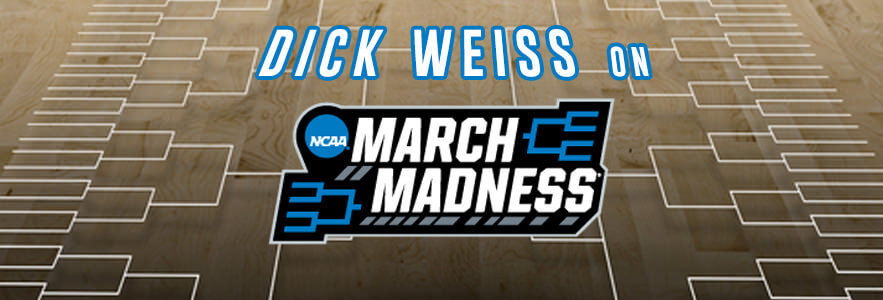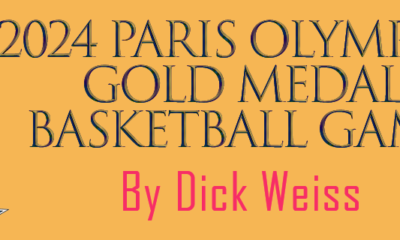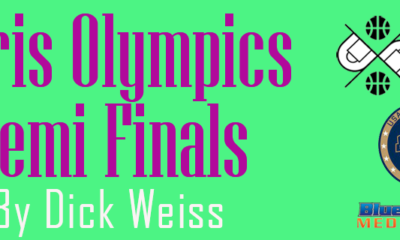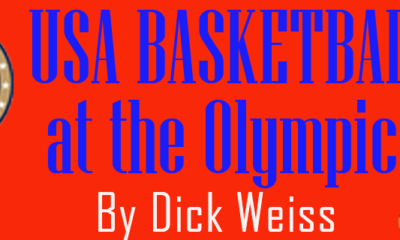
Dick Weiss on NCAA Tournament
PITTSBURGH, Pa.—Villanova has won a national championship in 2016 and has finished 1 and 2 in the AP final poll for the past two years.
The Wildcats’ success has not come without a price. They are suddenly being judged by a new set of standards.
Villanova coach Jay Wright likes to say he evaluates his team by the way they play throughout the season, but the Cats’ rabid fan base is now judging them by the way they perform in March, much like Kentucky, Kansas, Duke and North Carolina.
Mid-majors are happy to make the brackets. Top 10 programs are expected to advance an add Final Four appearances to their resume, especially when they are a 1 seed.
“I can definitely see that,’’ Wright said. ”I see when people talk about being out here Thursday and Saturday. You got to get by Thursday. This is around our players also. We even talked about the fact some kid will yell at you on campus, ‘Hey, see you in San Antonio.’ You put that on Twitter, that’s like someone’s making a guarantee.
’’All of that is going on around them and it’s something that we need to be cognizant of. There’s a lot of things that come with expectations. Then the disappointment comes when you don’t make it, too. It can be a miserable off season, but I’ll still take that any time over the opposite.’’
The Cats are the favorite in Vegas this year to win a second national championship in three years.
It is never easy.
That is why Villanova’s second round St. Patrick’s game against Alabama Saturday at 12:10 p.m. (CBS) takes on added significance. For all the success the Cats have had during the Jay Wright era, they have also had a history of being eliminated by the end of the first weekend.
Since 2010, the year after the Cats went to the Final Four in Detroit, they have been eliminated twice in the first round by and George Mason (2011) and North Carolina (2013) as a lower seed, four times in the second round by St. Mary’s (2010), Connecticut (2014) North Carolina State (2015) and Wisconsin (2017) as a higher seed and three times on St. Patrick’s Day. They did not make the tournament in 2012 and their one saving grace was the 2016 national championship.
“If you’re a 1 or a 2, you think you got a pretty good team. But we know enough about the tournament that anything can happen. I always talk about the 2008 tournament. We played Clemson. They were a 5 and we were a 12. We were down 20 at half. We come back to win. Siena upsets Vanderbilt in our pod. We beat Siena and we get to the sweet 16. We were not a Sweet 16 team that year, but we got celebrated as a Sweet 16.
“In 2014, we played Connecticut. They probably should have lost to St. Joseph’s a first round game in Buffalo. They had a guy make a three-point play and he had hardly scored all year and was a 50 percent free throw shooter. He made a shot to win the game. You felt like this team is hobbling into our game. And they came in and played lights out, then went on to win the national championship.’’
On paper, Villanova has a limited amount of excuses this season.
This is Wright’s best offensive team ever. Junior point guard Jalen Brunson, redshirt junior forward Mikal Bridges, 6-9 red shirt freshman forward Omari Spellman and redshirt sophomore guard Donte Divincenzo all have pro aspirations and the Cats are the only team in the tournament who can put five players on the court who can make threes from any spot on the floor. They also have experience. Five of the top six players in their eight-man rotation are red shirts.
When Villanova is shooting the ball well from the three, they can be almost unbeatable. The top-seeded Cats warmed up for this year’s second round game by shooting 59/6 percent and making 14 threes during an 87-71 victory over 16th seed Radford before a sellout crowd at the Pittsburgh Paints Arena.
Villanova is married to the three-point shot.
“I fell in love with the three-point shot the first time I shot one,’’ Wright said. “When I played college basketball, we didn’t have one. I used to shoot them from out there. So, the first time they put that line down, I didn’t care about my team, I want to go out and shoot some. But the first time we really used it was back in 2005 after Curtis Sumpter tore his ACL in the NCAA tournament against Florida. We had to play Carolina next and we had a choice between starting a 6-0 five man who was inexperienced, so we would have two big men or play a guard, freshman Kyle Lowry, who we knew was going to be a great player.
Carolina was huge. So, we said, okay, what are we going to do with the big guy, post him up, maybe get two. Carolina that year had five first round draft picks and one of them was their sixth man. We said we’re not going to do that against these guys. What’s the next best thing to do? Put a guard out there and shoot threes. We played great and that was a lot of fun.
“And I got to admit, in the middle of the game, I was like this is really cool. And we can get thee kind of guys. We might not be able to get these 6-11 guys that Carolina got, but we can get these guys.’’
But if the threes aren’t falling, Nova’s high scoring offense can run cold, too.
In 2015, when NC State defeated the 1 seed Cats, 71-68, in a second-round game here, Villanova shot just 31 percent and made just 9 of 28 threes. When they lost to Wisconsin, 65-62, last year as a 1 seed in Buffalo, they blew a 57-50 lead and only scored one field goal in the final five and a half minutes.
Villanova will have to get by Alabama, an SEC team with two freak freshman athletes—guard Collin Sexton and wing forward John Petty, who are both future NBA players and three true rim protecting centers. Their main objective will be use their length and quickness to pressure guards Phil Booth, Brunson and Divicenzo and take away the three from Villanova’s offensive arsenal.
The young Tide has nothing to lose.
Villanova is the team with all the pressure to survive and advance.
Dick Weiss is a sportswriter and columnist who has covered college football and college and professional basketball for the Philadelphia Daily News and the New York Daily News. He has received the Curt Gowdy Award from the Naismith Basketball Hall of Fame and is a member of the national Sportswriters Hall of Fame. He has also co-written several books with Rick Pitino, John Calipari, Dick Vitale and authored a tribute book on Duke coach Mike Krzyzewski.









